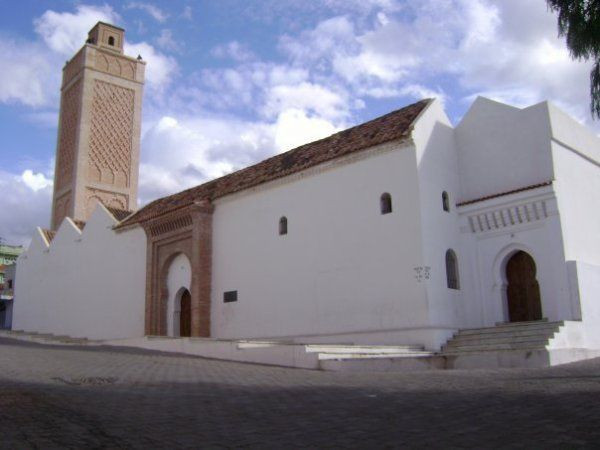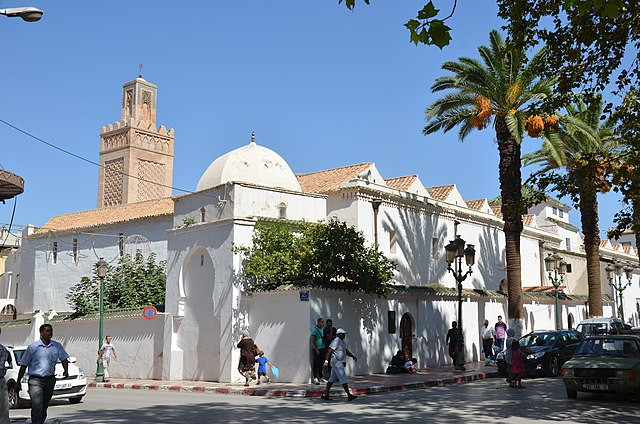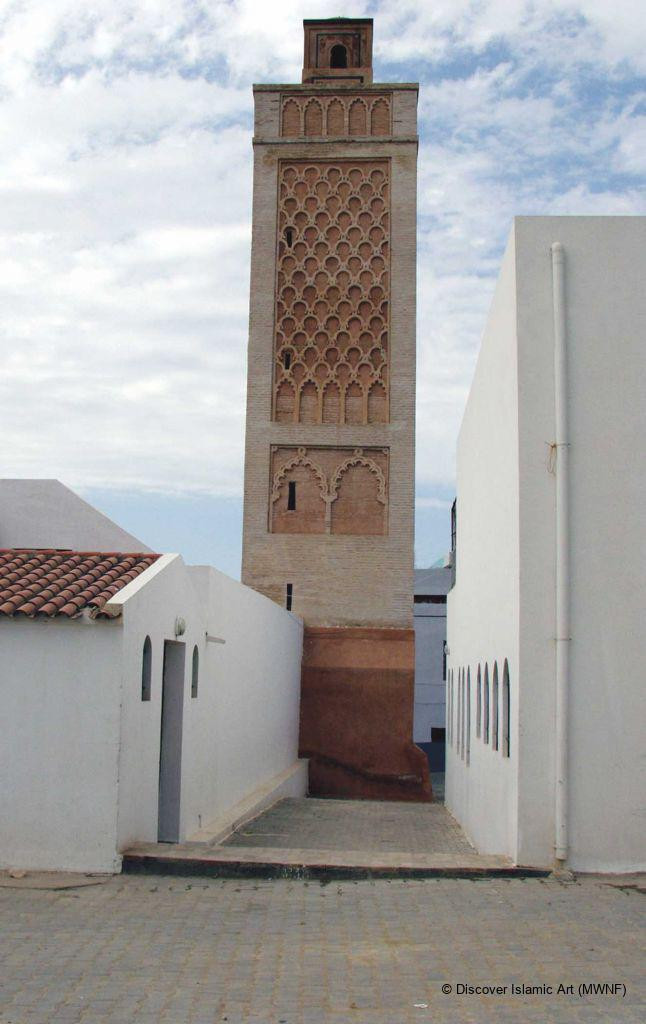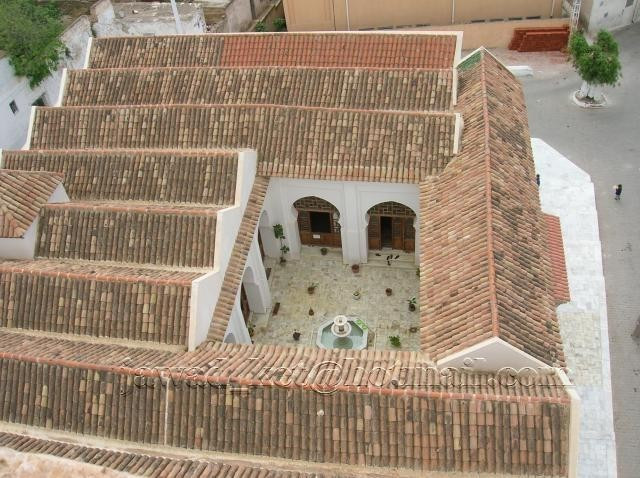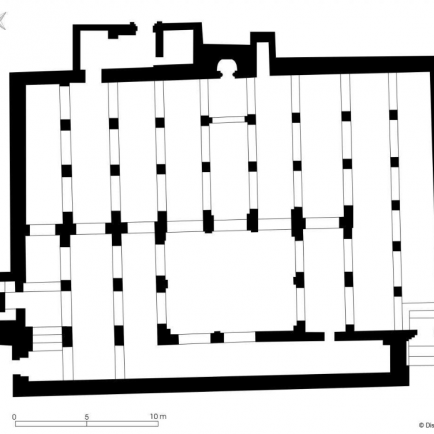Grande Mosquée de Nedroma
History
The Great Mosque of Nedroma was built in 1145 by Tachfin Ben Ali, prince of the Berber Almoravid dynasty, and its minaret in 1348 by the architect Mohammed al-Sisi.
Urban and Architectural
The Great Mosque of Nédroma is similar in form to that of the Great Mosque of Damascus in more modest proportions, but it belongs to the family of Andalusian type mosques like the great mosque of Cordoba characterized by the bays perpendicular to the qibla. Rectangular in shape, the building is accessed through entrances located in the corners of the north wall, opening onto naves perpendicular to the qiblî wall, which extend on either side of the quadrangular courtyard, forming triple side porticoes. The courtyard, located in the axis of the mihrab, opens onto the prayer hall with nine naves comprising three bays. The horseshoe bows are supported by pillars. The space before the mihrab is covered by an arch of cloister; there is every reason to believe that this square was never covered by a dome. The mihrab consists of a polygon niche, as in many medieval mosques in western Algeria influenced by the Great Mosque of Córdoba.
Description
It is built of stone and brick, with a tiled roof on a wooden frame. The exterior architectural decor is designed in brick, with a few marble slabs. The interior decor is made of ceramic tiles, carved wood paintings, and carved plaster.
References
https://fr.wikipedia.org/wiki/Grande_Mosqu%C3%A9e_de_Nedroma
https://islamicart.museumwnf.org/database_item.php?id=monument;ISL;dz;Mon01;28;en
Details
Location
Nedroma, Algérie
Worshippers
300
Year of Build
1145
Area
750
Drawings
Map
History
The Great Mosque of Nedroma was built in 1145 by Tachfin Ben Ali, prince of the Berber Almoravid dynasty, and its minaret in 1348 by the architect Mohammed al-Sisi.
Urban and Architectural
The Great Mosque of Nédroma is similar in form to that of the Great Mosque of Damascus in more modest proportions, but it belongs to the family of Andalusian type mosques like the great mosque of Cordoba characterized by the bays perpendicular to the qibla. Rectangular in shape, the building is accessed through entrances located in the corners of the north wall, opening onto naves perpendicular to the qiblî wall, which extend on either side of the quadrangular courtyard, forming triple side porticoes. The courtyard, located in the axis of the mihrab, opens onto the prayer hall with nine naves comprising three bays. The horseshoe bows are supported by pillars. The space before the mihrab is covered by an arch of cloister; there is every reason to believe that this square was never covered by a dome. The mihrab consists of a polygon niche, as in many medieval mosques in western Algeria influenced by the Great Mosque of Córdoba.
Description
It is built of stone and brick, with a tiled roof on a wooden frame. The exterior architectural decor is designed in brick, with a few marble slabs. The interior decor is made of ceramic tiles, carved wood paintings, and carved plaster.


